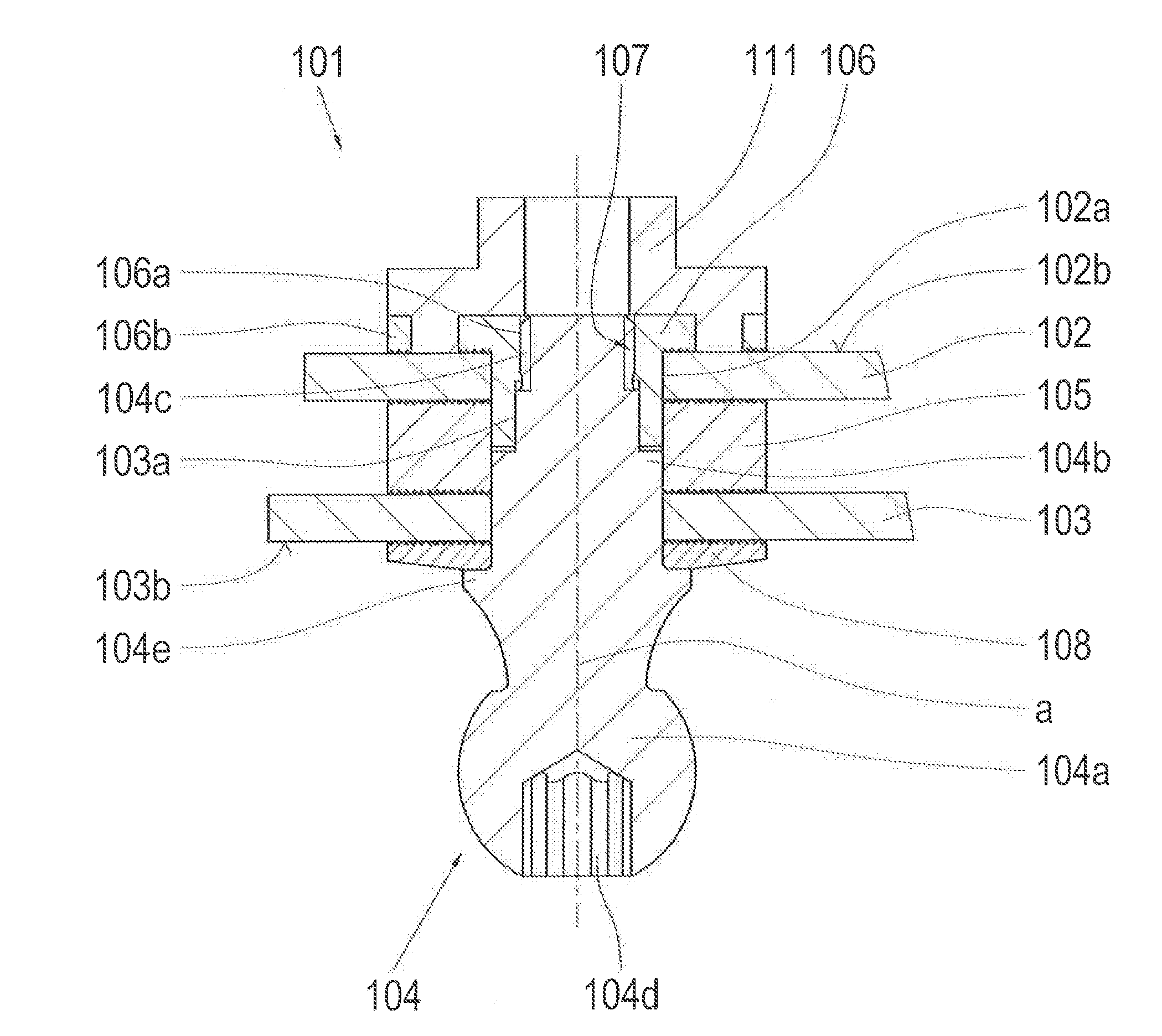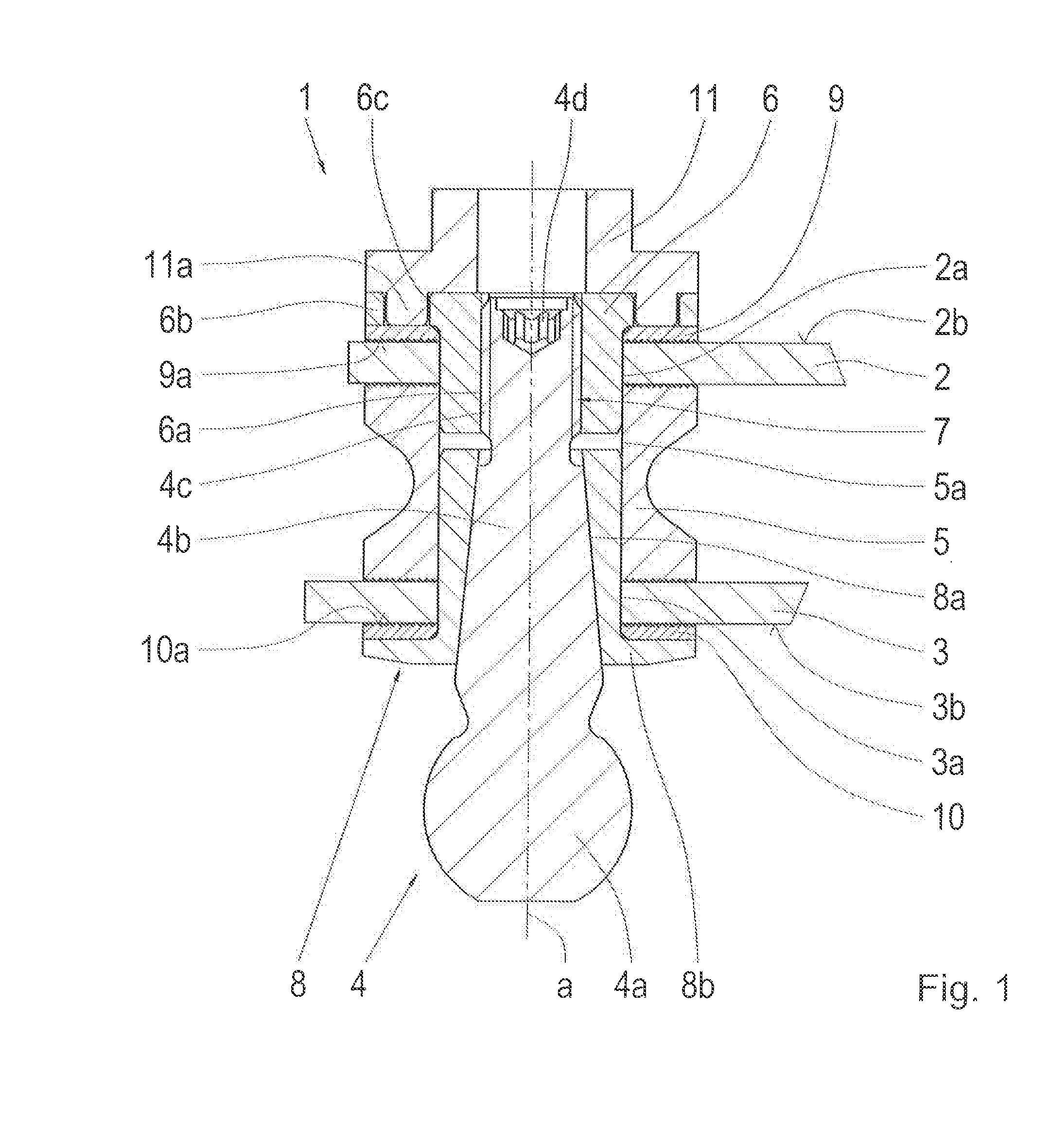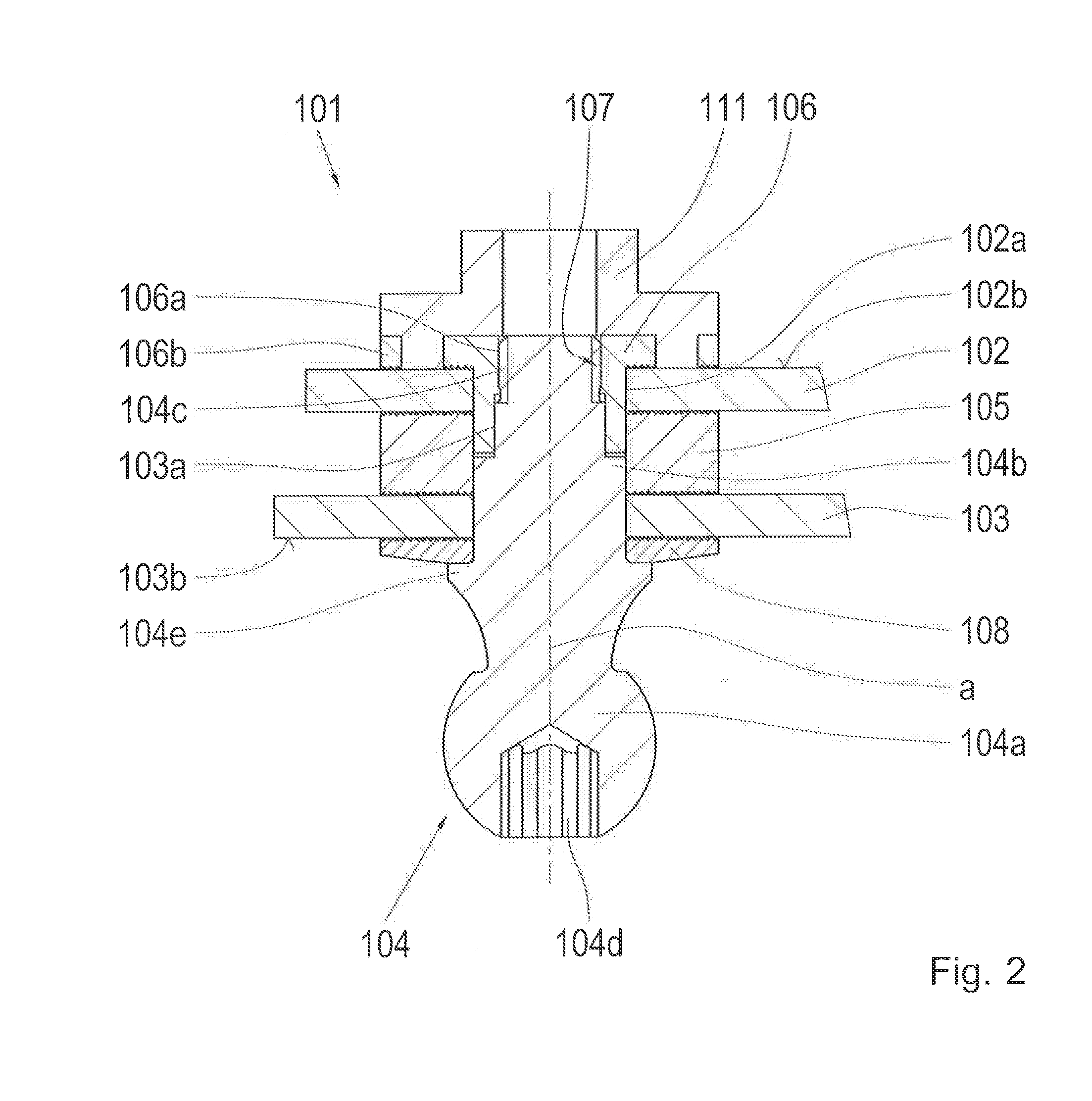Arrangement for connecting chassis components and wheel carriers for motor vehicles
a technology for connecting chassis components and motor vehicles, applied in the direction of transportation and packaging, mechanical devices, fastening means, etc., to achieve the effect of increasing the friction coefficient and softer surfaces
- Summary
- Abstract
- Description
- Claims
- Application Information
AI Technical Summary
Benefits of technology
Problems solved by technology
Method used
Image
Examples
Embodiment Construction
[0034]FIG. 1 shows an inventive screw connection 1 between a double-walled structure, comprising a first wall 2 as well as a second wall 3, and a load-introducing element 4, designed as a metallic ball stud 4. The first wall 2 and the second wall 3 of the double-walled structure are designed with a fiber-plastic-composite (FPC) which is manufactured with long or endless fibers and a matrix component of an artificial resin. The fibers create hereby a textile, for instance a fabric with a load matching alignment of the fibers. Such FPC structures are known from the state of the art whereby partially also the designation fiber-composite-plastic (FPC) is common. The double-walled structure 2, 3, only partially shown, is part of a larger component into which forces from another, unillustrated, component are induced through the load-introducing element 4. The ball stud 4 has a longitudinal axis a, ball head 4a, conical shaft 4b, as well as an outer thread 4c. The first wall 2 has a recess...
PUM
 Login to View More
Login to View More Abstract
Description
Claims
Application Information
 Login to View More
Login to View More - R&D
- Intellectual Property
- Life Sciences
- Materials
- Tech Scout
- Unparalleled Data Quality
- Higher Quality Content
- 60% Fewer Hallucinations
Browse by: Latest US Patents, China's latest patents, Technical Efficacy Thesaurus, Application Domain, Technology Topic, Popular Technical Reports.
© 2025 PatSnap. All rights reserved.Legal|Privacy policy|Modern Slavery Act Transparency Statement|Sitemap|About US| Contact US: help@patsnap.com



